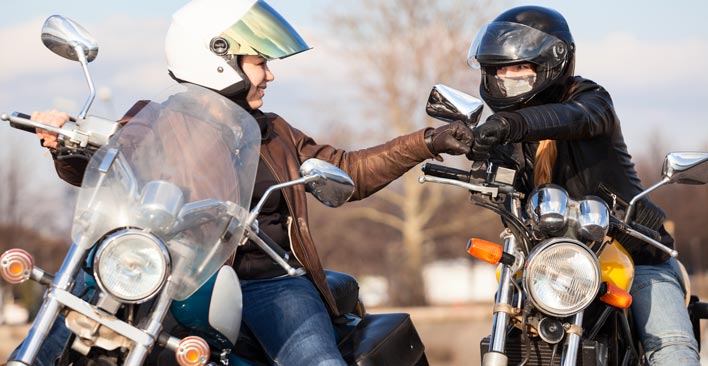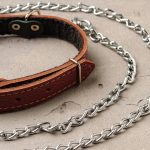Women motorcyclists are the fastest-growing demographic in the motorcycle world, with more women opting for two-wheeled (and three-wheeled) motor vehicles than ever before. What’s driving this trend, and how will it change the motorcycle industry?
Statistics
According to national surveys conducted by the Motorcycle Industry Council (MIC), the numbers of women who own motorcycles grown steadily over the past decade. In 2009, women represented only ten percent of motorcycle owners. By 2018, MIC’s latest national survey showed that women made up 19 percent of motorcycle owners.
During this same period, as more women revved up, overall motorcycle sales slowed down. Currently the numbers of baby-boomer and older motorcyclists shrink and are replaced by newer riders from younger generations.
And the future of female motorcycle owners looks like it will follow the trend: the percentage of younger women who own motorcycles is rising. Women born between 1985 and 2004 represent 26 percent of motorcycle owners. Women born between 1965 and 1984 make up 22 percent. Motorcycle industry experts predict that within the next couple of years, females will represent a solid 25 percent of motorcycle owners.
Statistics also suggest that women may be safer riders.
Data from the Insurance Institute of Highway Safety shows that in 2017, traffic collisions took the lives of 4883 motorcycle drivers. Of these, 4,701 were men and 182 were women. This means that in 2017, while somewhere between 14 and 19 percent of motorcycle owners are women, only 3.73 percent of them died in crashes.
Of course, there are other variables involved; overall motorcycle ridership is still predominantly male. But according to MIC’s 2014 survey, women riders were also more likely to have taken a certified motorcycle safety course. 60 percent did, compared to only 42 percent of their male counterparts.
The MIC survey data also revealed the current wave of female motorcyclists are also younger than their male counterparts. The average age of a female motorcyclist is currently 39; for men, it’s 48. But they’re not nomads. Almost half of them are married. 47 percent of female motorcyclists have a college or postgraduate degree. They’re not posers, either: about half do their own maintenance.
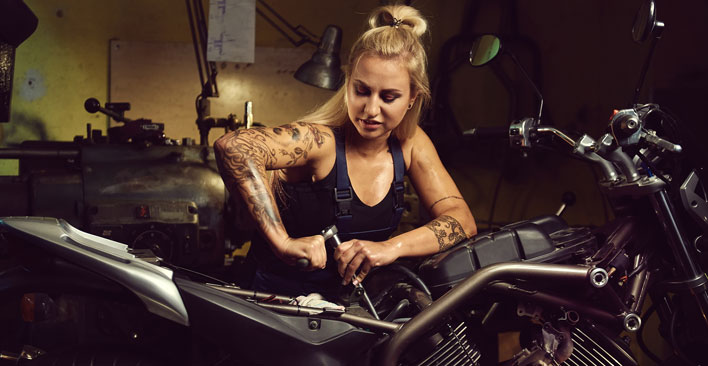
Why Women Ride
What’s behind the growing trend of female motorcycle riders?
When asked, the reasons women give for riding motorcycles are much the same as men’s: freedom, independence, a sense of adventure, community.
Women who ride tend to feel a sense of empowerment when riding. Like male riders, they view riding as a form of therapy. Women who hit the open road are often breaking away from the often-overwhelming pressures of working motherhood. They do it to build confidence, boost assertiveness, and face their fears – to drop that bike, and then get right back on it and keep on riding.
Maybe the real question is, why now?
There is a growing sense among women in today’s America that maybe we haven’t come a long way after all. More women are standing up to the establishment and to rigid gender roles. Possibly, instead of sitting around feeling marginalized, more women are choosing motorcycles as a way to assert themselves and color outside the lines (or ride between the lanes).
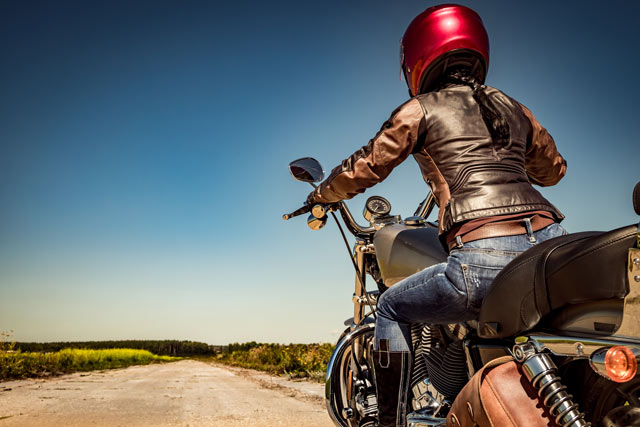
Challenges Women Riders Face
Of course, it’s not all smooth roads and full tanks for female bikers.
Researchers who have interviewed women bikers report that most said they experienced at least a minimal amount of fear when they began riding. Some fears are skill-based: operating a clutch, cornering (especially at slow speeds), and dropping it. Those are usually remedied through a combination of training and practice. Then, mastering the art of motorcycling becomes a source of pride and assurance.
Other fears are about perception and expectations. Will I be supported by my family and friends? How will male riders and the non-riding public perceive me? Who will I ride with?
Studies show these fears are also easily dispelled. 66 percent of women motorcycle owners say family and friends have a positive attitude toward motorcycles. Data shows that women riders are well-received by male riders and the public in general.
There are, of course, male motorcycle enthusiasts who don’t buy into the numbers provided by MIC. Some argue that the cruiser and café-style bikes many women like to ride aren’t really motorcycles because of the engine size.
Considering that women, on average, are smaller than men, and don’t have as much upper body strength, many are more comfortable on lower, lighter bikes. 61 percent of female motorcycle owners have a cruiser-style bike, according to a survey by Women Riders Now. Those who use engine size to define what a “real motorcycle” is may have a hidden bias.
However, these men represent only a small minority. Most male motorcycle enthusiasts are glad to see more women joining the sport.
Motorcycle manufacturers are also starting to produce more powerful bikes with a lighter weight, narrower gas tanks and lower seat height.
Another challenge women bikers face is difficulty finding well-fitting protective gear. There’s not exactly a vast choice, and smaller sizes of men’s gear simply don’t line up with the protection points on women’s bodies.
Clothing designers, take note: there is a real market opportunity for cool, comfortable, well-fitting protective motorcycle gear for women.
And if someone could design a helmet that doesn’t give you helmet hair, that’d be great, too.
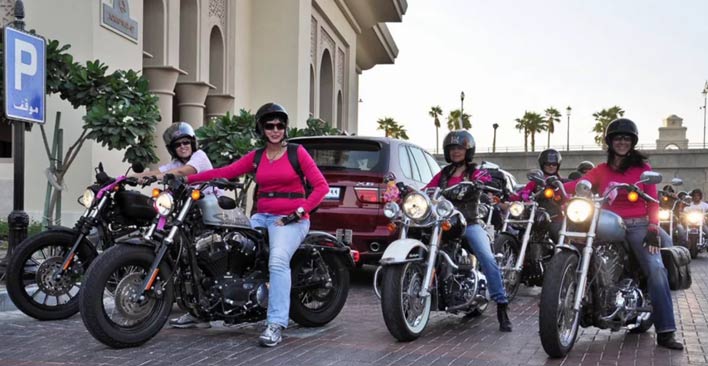
The Joy of Riding
In terms of who they ride with, many women have found kindred spirits in sisterhood communities of like-minded riders. Examples are Women in the Wind, Women on Wheels, Leather & Lace MC, The Litas. Like traditional motorcycle groups, these groups often participate in community events and raise funds for charity. But these groups bring an unapologetic feminine camaraderie and nurturing strength to what is traditionally viewed as a masculine pastime.
And in 2013, Harley-Davidson surveyed women motorcycle riders and non-riders to find out if those who ride are happier. It turns out, they are:
- 37 percent of women bikers report that they “always feel happy” vs. 16 percent of non-bikers
- More than half of women riders say their bike makes them happy
- 35 percent of women bikers report they always feel confident, vs. 18 percent of non-bikers
- 60 percent report being content with communication with their significant other (vs. 38 percent non-riders)
- 33 percent of women bikers say riding reduces their stress
- 74 percent of women riders say that riding has improved their life
If you’re a veteran motorcycle rider, male or female, or if you’ve just discovered the joys of riding, TorkLaw encourages you to ride safely.
But if you ever do have a motorcycle accident, TorkLaw can help you recover. We’re motorcycle enthusiasts ourselves and understand what you’re going through. Call us anytime for a free consultation. If we take your case, we won’t charge you unless we win.
Check out our Ultimate Motorcycle Accident Guide for more information.


